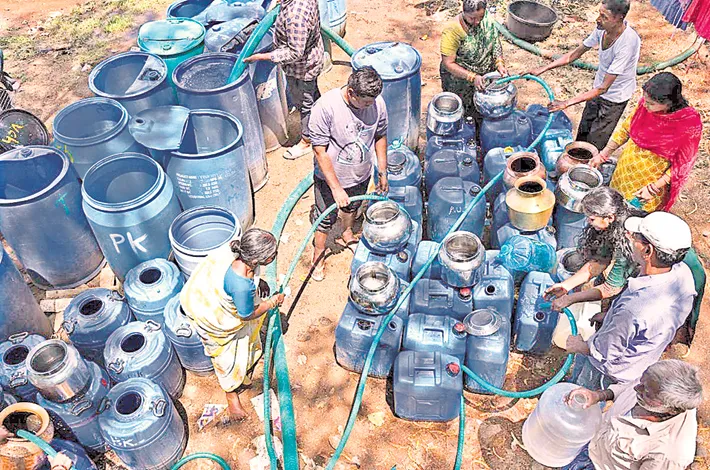Soft power and hard battles in times of tariff turmoil
19-04-2025 12:00:00 AM

India’s cultural diplomacy needs to focus more on youth in a region with a median age of 30.4, alongside its traditional template
As the United States and China, the world’s two largest economies, stay locked in a spiralling trade war, rattling the foundations of the global economy, uncertainties mount. So does the need for long-haul strategies, which includes cultural diplomacy.
Southeast Asia is on the frontline of an intensifying US-China rivalry and is being wooed. This month, on his latest regional tour, Chinese president Xi Jinping made stops in Vietnam, Malaysia and Cambodia, explicitly calling for stronger free trade between China and ASEAN. Chinese state broadcaster CGTN focused on the cultural connections between Southeast Asia and China on similarities between Confucianism and Islam, people-to-people exchanges, and more. ASEAN plays a crucial role in global supply chain dynamics due to its strategic location and strong trade networks. Its 10 member states have a combined GDP exceeding US $3.6 trillion and a population of over 676 million.
Beijing has seized the moment to project itself as a source of stability and is offering ASEAN nations a narrative of inclusion and mutual growth. The idea of culture as a complement to commerce is not new. Cultural diplomacy builds trust for business engagement. A recent report in Nikkei Asia noted, “Southeast Asians have developed a taste for Chinese minidramas, underscoring the country’s tenacity in expanding its cultural influence amid growing economic interdependence in the region.” Indonesia and Thailand were among the four Southeast Asian countries ranked in the top 10 countries for Chinese minidrama downloads in 2024, the report added. Interestingly, India also featured among the top ten countries for Chinese microdramas last year.
Just as the United States has done for decades, China is exporting its pop culture, like Ne Zha 2, a 2025 Chinese animated fantasy action-adventure film, along with minidramas, music, and digital content to Southeast Asia and other parts of the world. With Confucius Institutes, scholarships, and Mandarin language training across ASEAN, China is focusing on young regional leaders, bureaucrats, and business professionals, all of which helps strengthen its presence in Southeast Asian societies and build cultural affinity and public goodwill. ASEAN countries also depend highly on Chinese tourists.
Where does that leave India? The Trump administration’s reported plans to use ongoing tariff negotiations to pressure US trading partners to limit their dealings with China, as reported by The Wall Street Journal this week, potentially open up opportunities for India. But while India is emerging as a safe haven for investors looking for alternatives to China, it remains reliant on Chinese imports, especially in electronics and pharmaceutical intermediates. India is also positioning itself not just as a trading partner but as a cultural cousin of Southeast Asia, emphasising shared cultural and historical bonds.
“India and Thailand’s centuries-old relations are connected through our deep cultural and spiritual ties. The spread of Buddhism has connected our people. From Ayutthaya to Nalanda, there has been an exchange of intellectuals. The tales of Ramayana are a part of Thai people’s lives,” said Prime Minister Narendra Modi during his recent trip to Bangkok to attend the sixth BIMSTEC (The Bay of Bengal Initiative for Multi-Sectoral Technical and Economic Cooperation) Summit. In February, in a video address to the fourth edition of Samvad, a global Hindu-Buddhist initiative for conflict avoidance, held in Thailand, Modi said the shared traditions of Asia, rooted in the principles of ‘Dhamma’, provide answers to the environmental crisis plaguing the world. India has proposed celebrating 2025 as the ASEAN-India Year of Tourism, allocating $5 million to promote people-to-people connectivity and bilateral tourism.
India’s connection to Southeast Asia through Buddhism is a cornerstone of its soft power strategy. It has helped restore important Buddhist sites in Cambodia and Myanmar, reinforcing historical bonds. These initiatives align with India’s ‘Act East’ policy to strengthen India-ASEAN ties in trade, security, and connectivity. But soft power can at best complement hard economic advantages that other countries can see for themselves. Last year, an opinion piece headlined ‘India’s Buddhist diplomacy in action’ in The Bangkok Post by Thai political scientist Titipol Phakdeewanich stated, “The historic loan of relics of the Lord Buddha and his chief disciples Sariputra and Moggallana to Thailand has created excitement among Buddhist Thais. It was an act of gracious generosity by the Indian government.” These were rare relics not meant to be lent for exhibition within and outside India, Phakdeewanich noted. He went on to write, “Whilst this Buddhist diplomacy has enhanced Thai-India relations, the question arises whether it can elevate India’s position in the lower Mekong Basin. It has been observed that China continues to increase its engagement through its Belt and Road Initiative programme, which India cannot easily match soon.”
There are areas where India can match any country. The most obvious are IT and IT-enabled services, engineering, and financial and marketing professionals. They can catalyse a partnership as enduring as the millennia-old religious, cultural and social ties between India and Southeast Asia. India’s cultural diplomacy needs to focus more on youth in a region with a median age of 30.4, alongside its traditional template.








